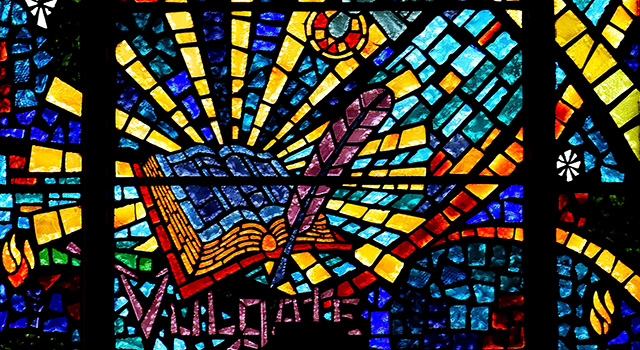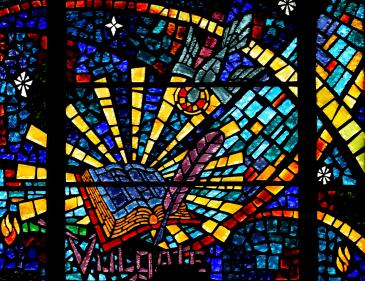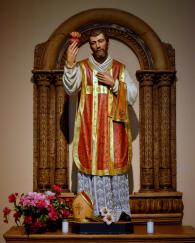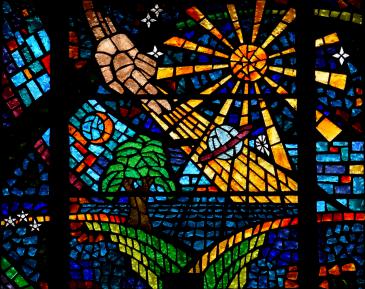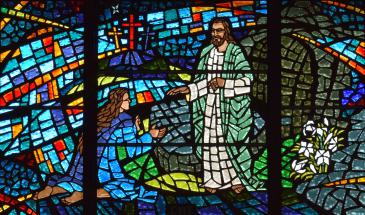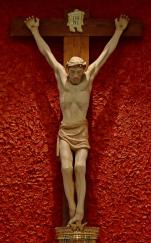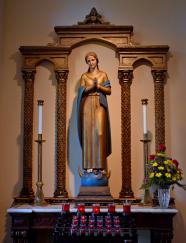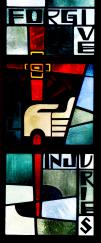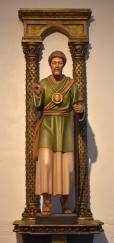By Jim Davis - Florida Catholic
Photography: JIM DAVIS | FC
FORT LAUDERDALE | A book, rather than a St. Jerome statue, takes up a big stained-glass window at St. Jerome Church. As well it might. The fourth-century monk, whose feast day is Sept. 30, is recognized most for producing the monumental Vulgate, which became the Church Bible for more than a millennium.
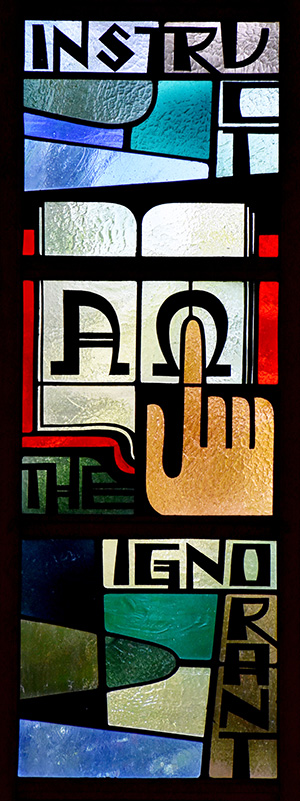
Photographer: JIM DAVIS | FC
Windows along the side walls remind worshipers how to follow Jesus' commands. This one urges them to "Instruct the ignorant."
Born around 340 in what is now Croatia, Jerome got a classical education in Rome. He then traveled widely and was eventually drawn to an ascetic life. He was ordained a priest, then appointed secretary to Pope Damasas, who prodded him to reform the Old Latin Bible.
So solid was the result of Jerome's work that the Council of Trent affirmed and re-issued the Vulgate more than a millennium later. It was then translated into other languages as the authoritative Catholic Bible until the 1940s, when other translations were allowed.
The Vulgate's value lies in Jerome's preference for translating directly from the original languages. He first revised the Old Latin Gospels based on Greek manuscripts. Then he translated the Old Testament from the original Hebrew, rather than the Greek version popular at the time.
Besides his biblical scholarship, Jerome wrote histories, biblical interpretation, and defenses of the faith against heresies of the day. He often argued with a sarcastic wit that would likely fit well in modern online debates.
Jerome also mounted spirited defenses of clerical celibacy, veneration of saints, and Mary's perpetual virginity. He is known as a "Doctor of the Church" — along with such names as Augustine, Thomas Aquinas, and Teresa of Avila — for his contributions to Catholic teachings.
He spent his last two decades, except for short trips, at a monastery in Bethlehem, and died in 420.
St. Jerome hasn't quite reached the heights of its patron saint, but the parish has its own colorful stories. Founded in 1960 by Bishop Coleman F. Carroll, the first bishop of Miami, the church became a refuge for seven Sisters of St. Philip Neri who had been exiled from Castro's Cuba.
The sisters served the school until they retired in 2016. At their retirement Mass, the main speaker was an U.S. assistant surgeon general — himself a graduate of the school.
St. Jerome has marked other milestones as well. Among them was when Mother Teresa of Calcutta slept over in 1974, during a visit to South Florida.
The parish has also bounced back from hard times. Vandals set fire to the church office in 1973. Others destroyed the church's first statue of St. Jerome in the 1980s.
In 2005, Hurricane Wilma caused more than $2.5 million in damage, but the building still sheltered several parishioners during the storm. And hundreds swarmed out for several days, cleaning up debris, then lunching together.
St. Jerome has also hosted Masses for Catholics from China and India, in their own languages.
